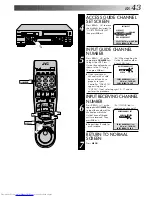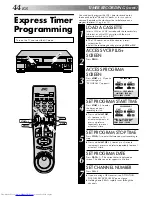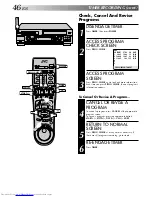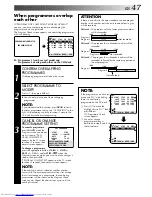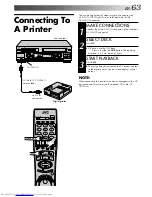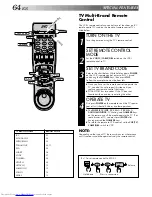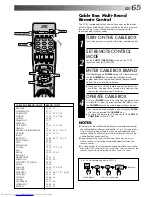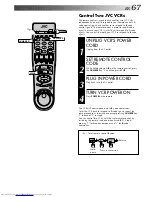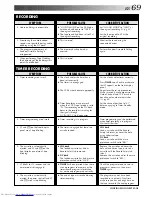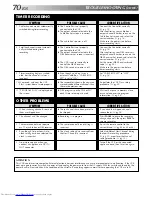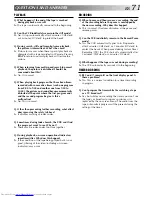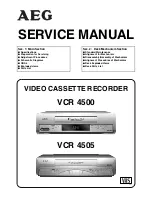
56
EN
ANTENNA IN
TV OUT
VHF/UHF
AUDIO
VIDEO
R
R
L
L
IN
OUT1
OUT2
CABLE
BOX
OUT1
OUT2
IN
S VIDEO
S VIDEO OUT
Edit To Or
From Another
VCR
You can use your VCR as the player or the recorder.
MAKE CONNECTIONS
1
Connect an AV cable between the player’s VIDEO OUT
and AUDIO OUT connectors and the recorder’s VIDEO
IN and AUDIO IN connectors.
●
If using another VCR with an S-VIDEO input or
output connector, it is recommended to use the
S-VIDEO connection to minimize picture degradation
while editing.
●
When using your VCR as the recorder and a monaural
VCR as the player, connect the player’s AUDIO OUT
connector to the AUDIO IN L connector on the recorder.
LOAD CASSETTES
2
Insert the playback cassette into the player and the
cassette to be recorded on into the recorder.
SELECT DECK
3
Press
S-VHS
or
DV
.
●
When using your VCR as the source player, set
"OUTPUT1" to "VHS" or "DV", depending on the
deck being selected (
pg. 57).
Recorder
Another VCR
AUDIO IN
Audio/Video cable
(supplied)
VIDEO IN
Player
Your VCR
VIDEO
OUT
AUDIO OUT
Advantages Of S-VHS Editing
S-VHS allows you make high resolution video recordings
when dubbing from one VCR to another.
You can edit from VHS to S-VHS, from S-VHS to VHS, or
from S-VHS to S-VHS.
●
From VHS to S-VHS: Record VHS playback signals in the S-
VHS mode. Although the picture quality is inherently
limited by the orignal VHS source material, the edited tape
has better picture quality than those made by VHS-to-VHS
editing.
●
From S-VHS to VHS: Because the picture quality of the
source material is very high, the edited tape has better
picture quality than those made by VHS-to-VHS editing.
●
From S-VHS to S-VHS: A high resolution copy is made of
a high resolution original S-VHS tape with minimal
picture degradation. This is the preferred method of
video dubbing.
S-Video cable
(supplied)
S VIDEO IN
EDITING (cont.)
4
5
6
7
8
9
0
2
4
1
DV
S-VHS
DV
S-VHS
DV
S-VHS


